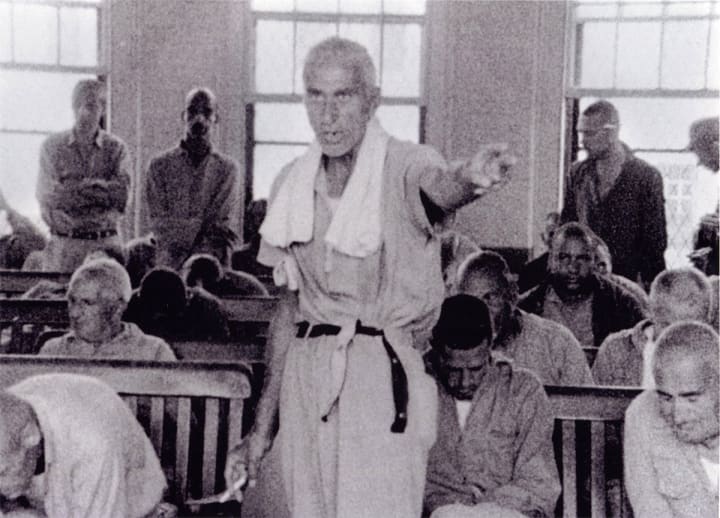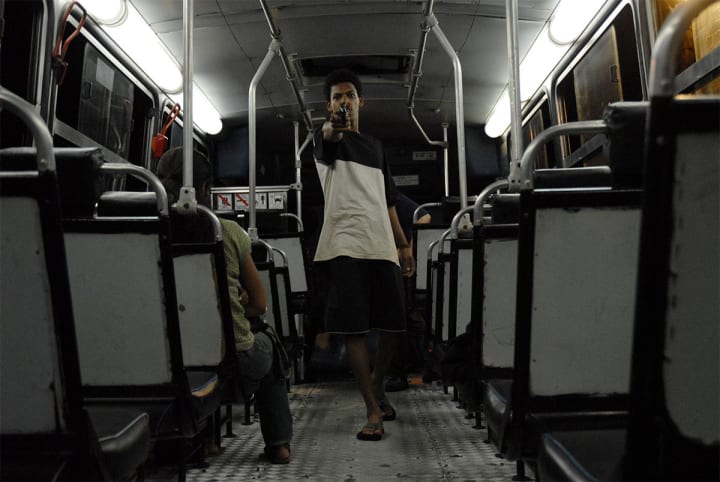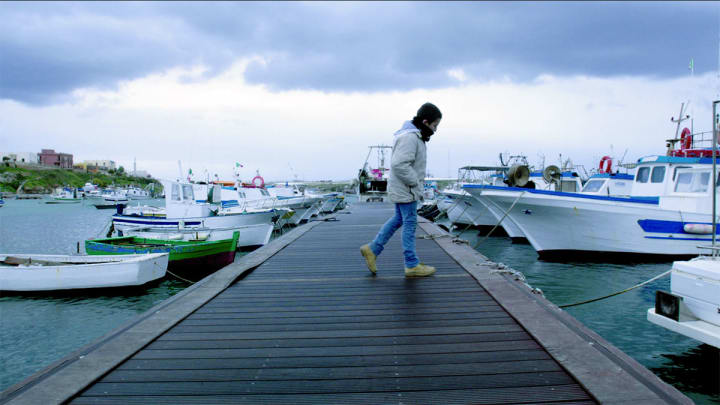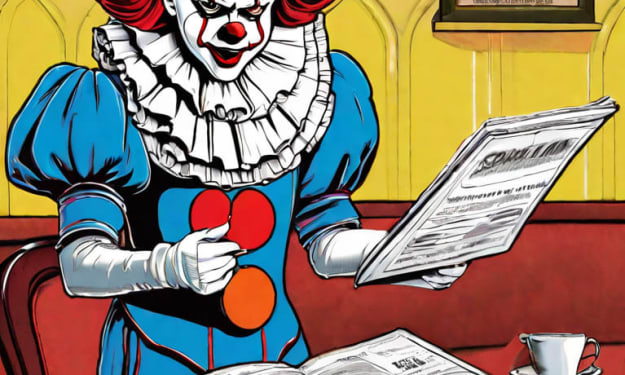Best Political Documentaries to Watch
Political documentaries are often very specific, but they encourage us to see the wider implications.

In teaching us about their chosen subjects, documentaries prompt us to look within and draw conclusions about ourselves. With stories spanning from Los Angeles, California to Chengdu, China, these political documentaries are essential to watch in the face of an uncertain global future.
Chronicle of a Summer

A pioneer of sociopolitical filmmaking as well as cinéma vérité, Jean Rouch collaborated with sociologist Edgar Morin to make Chronicle of a Summer, a film which takesplace in Paris in 1960 and is centered around a group of Parisians dealing with the repercussions of recent political developments. An anthropologist by trade, Rouch strategically takes an understated role onscreen and instead allows his subjects - students, factory workers and middle class citizens, among others - to talk about issues such as colonialism and the Holocaust. Chronicle of a Summer is recognized as the first unscripted film released in France to include debate about the Algerian War of Independence, a topic which had deeply polarized public opinion at the time. One of the film's particularly mesmerizing sequences portrays a young Jewish woman as she walks alone through Parisian streets and narrates the fate of her relatives at the hands of the Nazis.
Through these various political discussions held over coffee and biscuits the film painstakingly builds up to the overarching question: “How should we be living?” What is beautiful about Chronicle of a Summer is not any one specific conversation, but simply the fact that dialogue is taking place at all; Rouch and Morin are responsible for bringing together these people who would otherwise remain strangers.
Titicut Follies

Legendary American documentarian Frederick Wiseman’s debut feature Titicut Follies is one of the most scarring and damning political documentaries of its kind. Granted unprecedented access to Bridgewater State Hospital for the criminally insane, Wiseman and his omnipresent, unrelenting camera do not shy away from the horrors that the inmates are subjected to; the film is anticipatory of his later, more extensive body of unnarrated work that observes the day-to-day workings of similar institutions. We are privy to disturbing scenes of abuse as guards and employees neglect to clothe inmates (for the convenience of not having to clean up), ask intrusive questions about their toilet use and visibly laugh at their paranoia and insecurities. More pertinently, a paranoid inmate, Vladimir, argues how the asylum not only fails to cure him but further deteriorates his mental state.
As per the film's political objective, Titicut Follies points out the culpability of the state in this regard and its flawed ethos towards mental conditions. In one famous sequence, Wiseman intercuts a force-feeding episode with the later embalmment of the same man.
Who Killed Vincent Chin?

As underrated as it is rare, the Oscar-nominated documentary Who Killed Vincent Chin? by NYU film professor Christine Choy is about the murder of 27-year-old Chinese American engineer Vincent Chin by Detroit auto workers Ronald Ebens and Michael Nitz, a father and stepson duo who got into an argument together in a strip club where Chin was having his bachelor party. Choy does not just explore the radical injustices of the case (despite having struck Vincent Chin over fifty times in the head with a baseball bat, Ronald Ebens was only convicted of manslaughter and served no prison time), but creates a panoramic view of an America where such a crime and miscarriage of justice is conceivable.
Interviews with Chin’s heartbroken mother, a stripper named Stardaysha who witnessed the initial altercation between Chin and the men, and the maddeningly in-denial Ebens, do not just comment on the tragedy of the crime but also on how a supposedly civilized society is being overtaken by hatred. For example, prior to Chin's death there had already been a sense of discontent among unemployed auto workers in Detroit about the rise of imported Japanese vehicles. “It’s because of you little motherfuckers that we’re out of work,” Ebens allegedly shouted at Chin before attacking him. Chin’s mother married an American soldier while he was stationed in China during the war. Her heartrending appeal at the end of the film, almost unintelligible through her thick Chinese accent and sobs, “I just want justice for my son,” is one of the most harrowing scenes of grief captured in this important political film.
Bus 174

In the spirit of Errol Morris’ The Thin Blue Line, this 2002 Brazillian documentary film tells of a hostage situation that took place on a bus on Valentine’s Day in Rio de Janeiro. Bus 174 is unique in that it predates the contemporary fascination with real-life crime documentaries and docudramas. Filmed by a multitude of television news cameras, millions of Brazilians watched from their homes as Sandro do Nascimiento took control of a public bus and staged fake executions of passengers with his .38 revolver.
Nascimiento's crime was in part a result of his deep anger after witnessing the murder of his mother, an infamous police massacre of the homeless where he lost several of his friends, and time spent in jail. In one sequence we see desperate and emaciated faces pressed up against the bars of their cells in that same jail, crying out for help and respite from the cruel conditions of their imprisonment. It is a scene in a political documentary that is as distressing as any horror film. As Roger Ebert said, “A nation that can permit these conditions cannot call itself civilized.”
Bowling For Columbine

This 2002 documentary jumps between different places and people and displays their thoughts on the Columbine Massacre and America’s gun problem in general. The film takes no singular viewpoint, and Moore’s film is a time capsule of America’s varied and divisive responses to the tragic actions of Dylan Klebold and Eric Harris. It's difficult to reconcile the fact that if a documentary was made today about a similar incident (of which there have been many since), it's doubtful that any more of a consensus would be reached among the American public. But Bowling for Columbine is an educational political piece that is, unfortunately, as timely and important now as it was when it first came out.
The Fog of War

Errol Morris’ extended interview with former U.S Secretary of Defense Robert S. McNamara in the Oscar-winning The Fog of War: Eleven Lessons from the Life of Robert S. McNamara features one of the most fascinating conversations about politics and American history to ever take place. The subject is a man with the blanket firebombing air raids of Japanese cities and the Vietnam War on his conscience, and Morris’ film slowly chips away at McNamara’s veneer of integrity. One remark echoed by McNamara of Curtis LeMay gets to the heart of the concept of victory and integrity in politics: “If we’d lost the war, we’d all have been prosecuted as war criminals.” The tears running down McNamara’s cheeks by the end of the film offer a reflection of global sadness.
24 City

Jia Zhangke’s beautiful political documentary criticizes boundless capitalism not from a theoretical standpoint but against the backdrop of a lived-in experience of socialism. 24 City depicts a military factory in Chengdu before it is bulldozed to make way for luxury apartments. Combining the interviews of five former workers with three fictional characters (one played by his wife, the incomparably talented Zhao Tao), Zhangke creates a melancholic portrait of disillusionment, nostalgia, and fear as three different generations brace themselves for a change that they have no precedent for and a future over which they have no control.
The Autobiography of Nicolae Ceausescu

Photo by Mandragora/Film Desk
Over the course of three hours of archived footage we see Romania’s Communist Dictator Nicolae Ceausescu develop from an idealistic young radical who managed to walk a tightrope of foreign policy between the East and West into a cantankerous old man who walks into bakeries criticizing minutiae like the thickness of employees' beards while his country starves. As The Autobiography of Nicolae Ceausescu is a political documentary free of narration and talking heads, we take in the events as though bystanders at the time. The change from black and white to color film brings us up to date. Every piece of footage is officially state-sanctioned propaganda, yet director Andrei Ujică assembles it in such a way that allows cracks in the image of perfection to show through; that, or perhaps history does the work for him.
O.J: Made in America

Ezra Edelman’s epic five-part series O.J.: Made in America (which originally aired on ESPN) sustains its 473 minute run time thanks to its acute analysis of racial struggle in America. This is achieved not through just narrating one of the most infamous American criminal cases of the twentieth century but by documenting the rise and fall of the once-beloved celebrity at the center of the scandal. Winning over the white population with his matinee-idol looks, charm, and athletic prowess, O.J Simpson was at the time seen as a point of unity between the races in America, famously professing not to see himself as black; he was “just O.J.” This flawed conception of color blindness reinforces the need to acknowledge America’s inherent issues with race and racism. With an unparalleled depth of historical context spanning from the Ku Klux Klan around the time of O.J.’s birth to the notorious Rodney King beating by the LAPD in 1991, Edelman sets this sociological backdrop to the rise, fall, pardon and further fall of O.J. Simpson.
Fire At Sea

Set on the Italian island of Lampedusa, where immigrants journey in from Africa, Gianfranco Rosi’s political documentary Fire At Sea is one of the most essential films to come out in 2016. But the result is not what you’d expect. For instance, roughly half of the film strays from depicting the horrors of the immigrants' voyage and the refugee camps and instead follows the daily routine of a native child on the island. He goes to school, carves a slingshot out of bark, is prescribed to wear an eye patch to combat his lazy eye–a day in the life. Much like a typical Frederick Wiseman film, the audience gets a big picture from the accumulation of small, intimate scenes. Meanwhile, the other half of the film concerns the refugees who come to the same island. Some appear healthy and are portrayed playing football, singing, and praying, but many are dehydrated, battered and burnt, from an oil spill in the galleys of the ships they were transported in. The film makes no further connection between these two sets of people save for the location in which they now reside. By creating no further link, Rosi's political piece shows humanity at its core: how we are, and how we can change.
About the Creator
Patricia Sarkar
Raised on a steady diet of makeup and games. Eager to share my experiences with the world and make a difference, article by article! :)






Comments
There are no comments for this story
Be the first to respond and start the conversation.